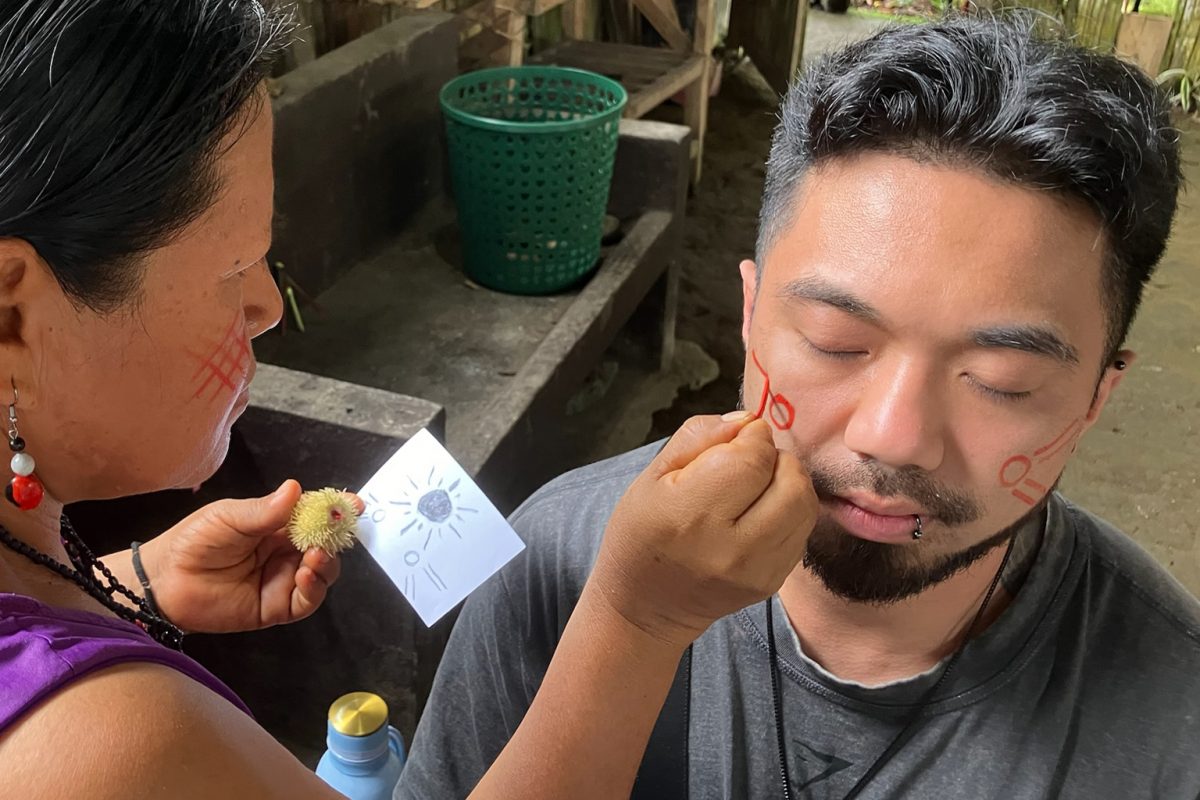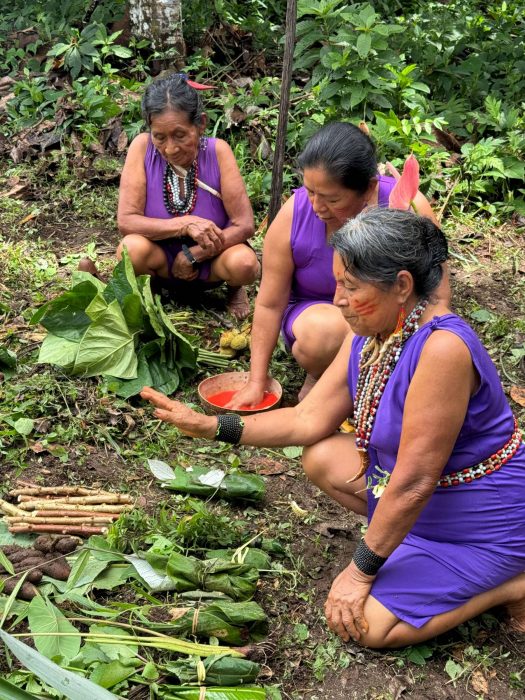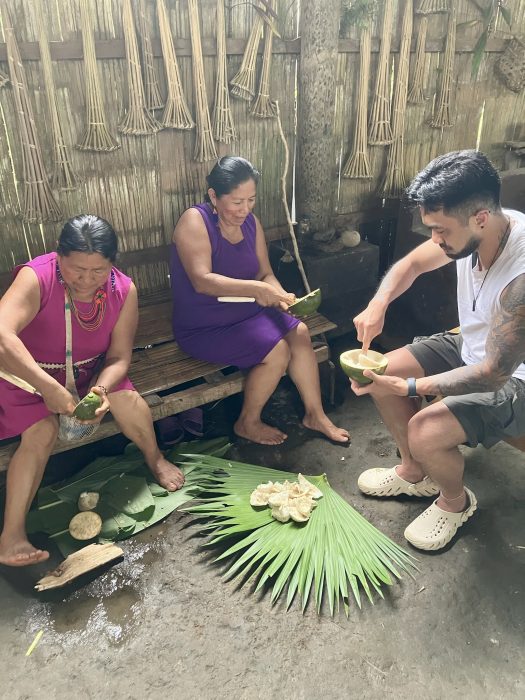
Pharmacy student learns about traditional medicine from Ecuador experts
When Brendon Virtucio heard that a group of students from Rady Faculty of Health Sciences was going to South America to learn from Indigenous healers, he jumped at the chance.
 “When are you ever going to go into the Amazon and learn about traditional medicines? said the PharmD student. “Other people were like, ‘I don’t want to go. There’s going to be soooo many spiders!’ But I was willing to try everything and anything.”
“When are you ever going to go into the Amazon and learn about traditional medicines? said the PharmD student. “Other people were like, ‘I don’t want to go. There’s going to be soooo many spiders!’ But I was willing to try everything and anything.”
The group arrived in the Andes mountains in Ecuador, then journeyed on to a small healing and birthing centre in the Amazon rain forest run by a collective of Kichwa healers and midwives.
“I really had no expectations, but when I got there it shocked me because it was very similar to my childhood in the Philippines,” said Virtucio. “The people looked different and they spoke another language, but for the most part, everything looked the same.”
What stood out for the students was the relationship the Kichwa people have with both the land and its medicines. “They grow and harvest everything themselves,” said Virtucio, describing the wide array of flowers, seeds and vegetation used in traditional healing.
Some plots they visited were in full flush, ready for harvest. Others were empty, letting the land rest. “It was incredible seeing how sustainable all their medicine was,” said Virtucio. “And it’s all right there! It’s like they never they never run out.”
As a first-year pharmacy student, Virtucio was fascinated by the plants and their unique uses and properties. Some were used for wound care, topically. Others could be boiled and made into a healing tea. Yet others could be prepared as an insect repellent – something you’d never want to be without in the dense rainforest.
He also learned about one more thing you don’t want to be without when you enter the forest: spiritual protection.
“Before we could go in, they took a bright red fruit to mark our faces to help us greet the rain forest,” said Virtucio. “I was given a cross with arrows to represent strength and protection. They wanted to keep us safe.”
 Organized by the Office of Interprofessional Collaboration (OIPC) in the Rady Faculty of Health Sciences, the trip was the second of its kind this year. This visit, which took place April 26 – May 5, included 11 students from the College of Nursing, College of Pharmacy and College of Rehabilitation Sciences.
Organized by the Office of Interprofessional Collaboration (OIPC) in the Rady Faculty of Health Sciences, the trip was the second of its kind this year. This visit, which took place April 26 – May 5, included 11 students from the College of Nursing, College of Pharmacy and College of Rehabilitation Sciences.
One of the objectives is for learners to appreciate the importance of cultural safety when delivering health care to Indigenous populations.
“As future health-care professionals, it is vitally important that learners see each patient as more than just a set of symptoms, but also as individuals with their own culture, traditions and ways of approaching their health,” said Dr. Peter Nickerson, vice-provost (health sciences) and dean, Rady Faculty of Health Sciences.
“The university is very fortunate to have partnerships around the world and across our province to be able to offer these exceptional experiential learning opportunities to our students.”
“Any student thinking of going abroad to study, I would tell them go,” added Virtucio. “It was completely unforgettable.”






